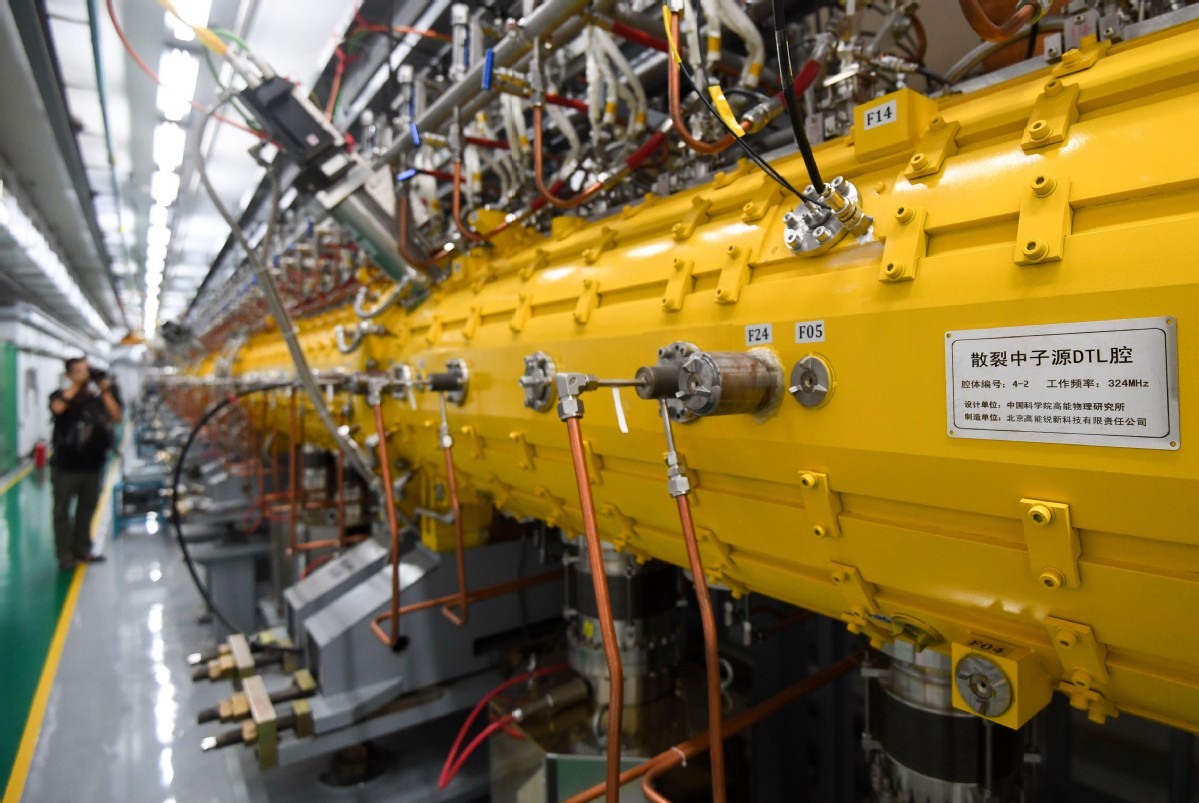'Super microscope' access in high demand


Facility has attracted dozens of research institutes from mainland, HK and UK
The China Spallation Neutron Source, a "super microscope" facility for studying the structure and movement of materials at the atomic scale, has conducted more than 100 experiments since opening in September.
The results will help scientists in fields ranging from creating better lithium batteries to making stronger steels, said Liang Tianjiao, deputy director of the Dongguan branch of the Chinese Academy of Sciences' Institute of High Energy Physics.
The 2.3 billion yuan ($335 million), 26.67-hectare facility in Dongguan, Guangdong province, has attracted users from dozens of research institutions from the Chinese mainland, Hong Kong and the United Kingdom. Scientists have published nine papers based on the results of experiments at CSNS, with more under review and being prepared for publication, Liang said.
The facility first accelerates protons down a linear accelerator and into a rapid cycling synchrotron - a circular particle accelerator - which further speeds up the particles to close to 93 percent of the speed of light while compressing them into "bullet-like" pulses.
The pulses then collide with a tungsten target, creating chips, or "spalls", of neutrons that can be channeled into instruments where scientists can measure their interactions with materials at atomic scale.
Since neutrons carry no charge, they can easily penetrate test samples and only interact with their nucleus. Neutrons are also more sensitive to light elements such as hydrogen, oxygen and nitrogen, making them ideal for use in studying intricate materials such as proteins or polymers.
"Thanks to its safety, stability and efficiency, the demand to use CSNS is very high. We can barely keep up with the applications," Liang said.
He said engineers will increase the power of CSNS's proton beam from 50 kilowatts to 80 kW this year and possibly reach the designed power level of 100 kW next year. More power allows researchers to conduct scientific research more quickly on a wider range of materials.
- Spokesperson reiterates Taiwan question is China's internal affair
- The crazier 'Taiwan independence' moves, the tighter anti-secession noose: Mainland spokesperson
- Mainland spokesperson responds to Trump's latest remarks on Taiwan
- Xi on Party self-governance and anti-graft
- New strategy to fight cancer developed
- Fudan's AI guidelines aid both students, teachers





































